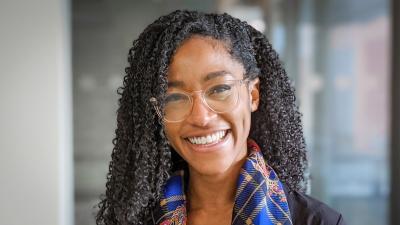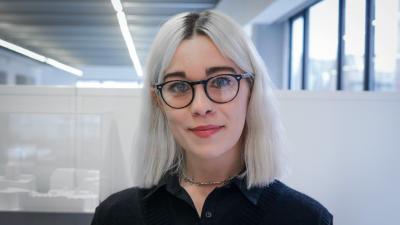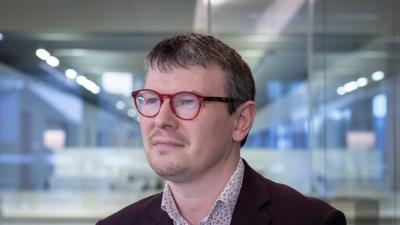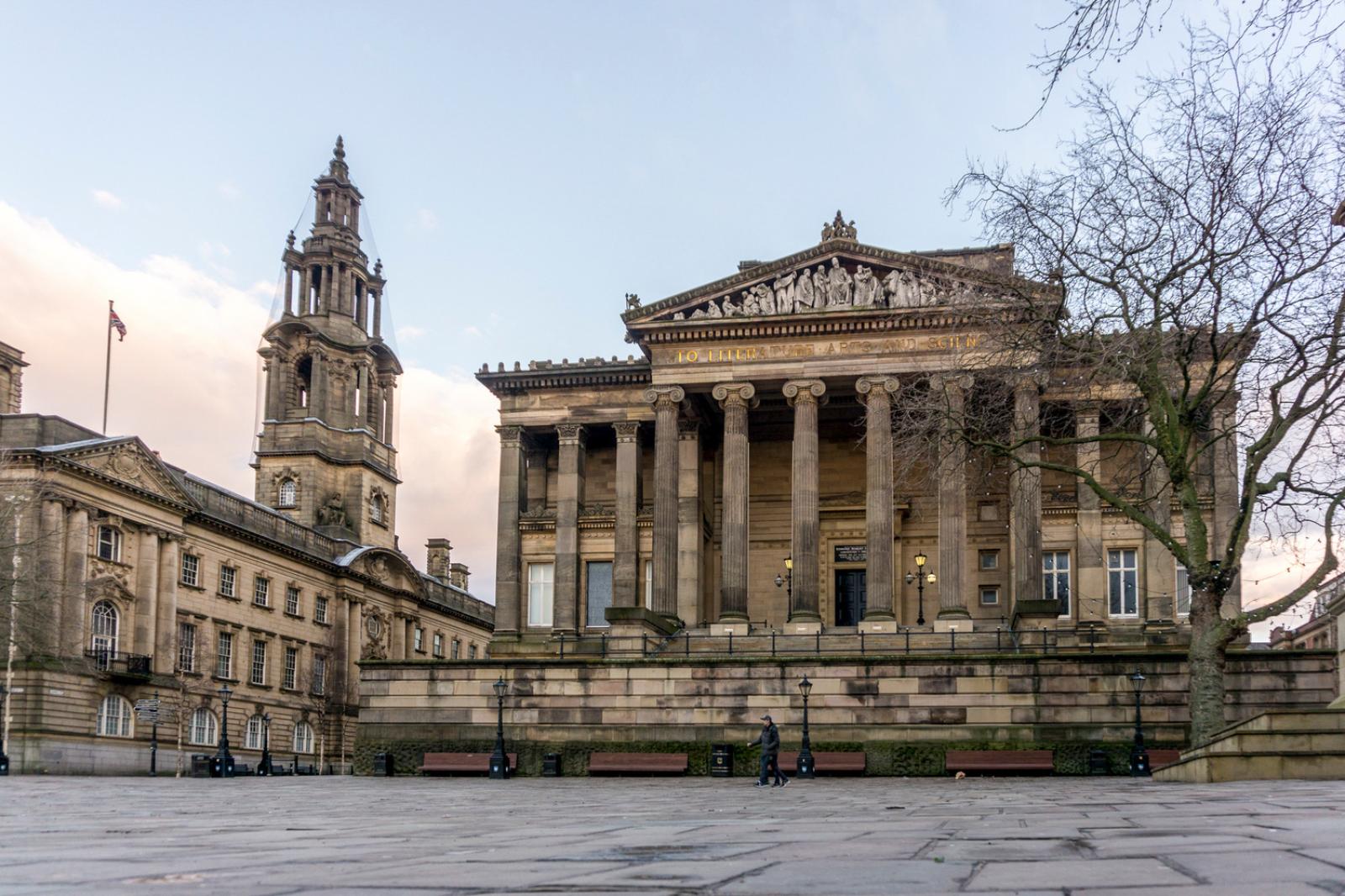
Over the past few years, The Harris Museum, Art Gallery and Library in Preston was a passion project for our team.
'The Harris Your Place' project is an evolution of the existing museum offer to create something unique – a cultural museum space that welcomes the community and promotes accessibility while respecting the significance of the Grade I listed building.
As the re-opening approaches, we sat down with lead architects Samantha Knights and Lauren Gabbitas to talk over their work on the project, some of the highlights and the future of The Harris.
Q: First, can you give us a brief overview of the Harris?
Samantha: The Harris Museum collaboration brings together our team, Preston City Council, and the interpretive designers at Ralph Applebaum Associates to deliver a refreshed, blended experience for the gallery. Our focus has been on improving accessibility wherever possible, while also carrying out essential maintenance work in line with the building’s Grade I listed status. The aim is to create a space that engages the local community while also drawing in visitors from further afield.
We’ve also been looking carefully at how the gallery spaces are used. Over the years, some contemporary additions limited the flexibility of the space. For instance, we’ve removed the mezzanine structures added during the 1980s and restored the galleries to their original layout. This allows more of the collection to be displayed and celebrated as it was originally intended.
Lauren: As Buttress also collaborated with Preston City Council on the Discover Preston Gallery prior to this project, we had a strong foundation for the current project. Many of the lessons we learned from the Discover Preston Gallery, which was very well received, informed our approach here and helped us build on the principles that worked well the first time.
Q: How did you balance the need to modernise The Harris while respecting its Grade I listed status?
Lauren: For us, it was about ensuring that The Harris continues to serve as a vibrant cultural hub while honouring the responsibilities that come with its listed status. Preserving its historic character was central to every stage of the planning process. We wanted to make the space more welcoming, accessible, and functional, but always in a way that complements and protects its heritage.
Samantha: And truly understanding its listed status means recognising its significance holistically. It’s Grade I listed not only because it’s an outstanding architectural landmark in Preston, but also because of the deep connection the community has with it. There’s a tangible and intangible value to the space - it is part of the city’s identity. That understanding informed every decision we made, combining best practices in heritage conservation, design, and meaningful stakeholder engagement.
Q: Can you elaborate on how the new accessibility features were designed to integrate into the historic fabric of the building?
Lauren: Enhancing accessibility was one of our top priorities for the project. We collaborated closely with an accessibility consultant to ensure the design was both thoughtful and inclusive. One of the key additions was a Changing Places facility, which we designed to match the new interventions within the museum. And deeply considered where it was introduced within the building. Also, by using materials and finishes that felt non-clinical, we were able to integrate the space into the building without compromising on the historic fabric.
Samantha: We also encountered some technical challenges during the process. For example, when we discovered that the existing groundworks couldn’t accommodate a new evacuation lift, we adapted by installing a kitchen lift instead. This ensured that accessibility needs, not just for visitors, but also for those operating and maintaining the building, were considered and addressed.
It’s been a privilege to contribute to something so significant for Preston and for the city’s cultural needs. The Harris sits at the heart of the community, providing a space for people to engage with art and culture in new ways, while still connecting with its history.
Q: What were the most rewarding aspects of working on the project?
Samantha: There were very big aspirations across all the teams working on the project. For instance, a major part of the fit-out involved relocating the central pendulum, a well-known part of the Harris, so that it was centred in the ceiling of the central rotunda. Conceptually it might look simple, but it required extensive coordination across multiple teams and a lot of behind-the-scenes effort. Seeing it come together so seamlessly has been incredibly satisfying.
We also carried out extensive engagement with UCLAN, the local university, and with those learning the conservation trade. It’s exciting to share knowledge with those who have a connection to the project, especially individuals who may have grown up with The Harris at the heart of their community.
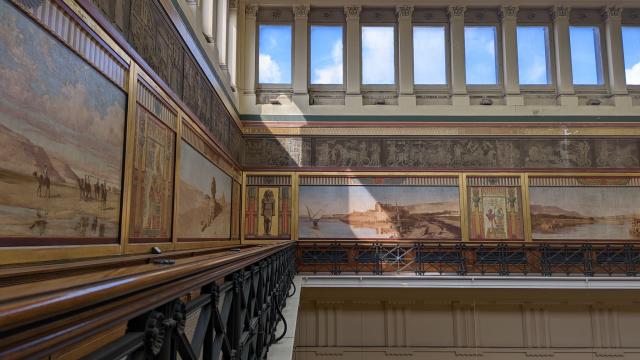
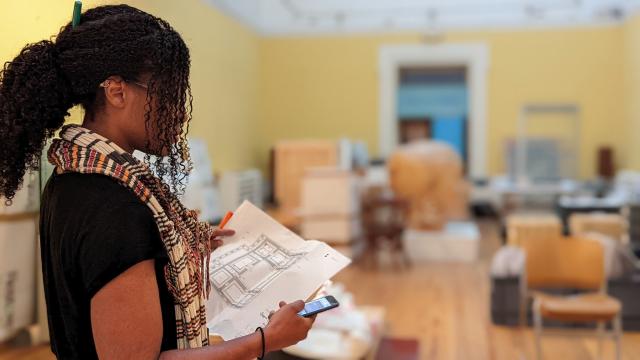
Q: And the biggest challenges?
Samantha: As we often find working on Grade I listed buildings such as the Harris, there are always ongoing repairs and maintenance demands to ensure the building retains its status while providing a contemporary offer. Staying ahead of these requirements can be a challenge. For example, we implemented additional fire safety upgrades beyond the original plan — a step that wasn’t in the initial scope but was essential for protecting both the building and the collection. Our priority was ensuring long-term safety without compromising the project’s overall vision. There’s a lot of bespoke problem-solving that goes into the less visible aspects of the project, like creating the right environmental conditions to safeguard the collections. These details might not be obvious when visiting, but they’re critical to the building’s long-term care and use.
Lauren: Projects like this also evolve as we learn more about the building. Again, the evacuation lift is a good example - once we understood more about the groundworks, it became clear that an alternative solution was required.
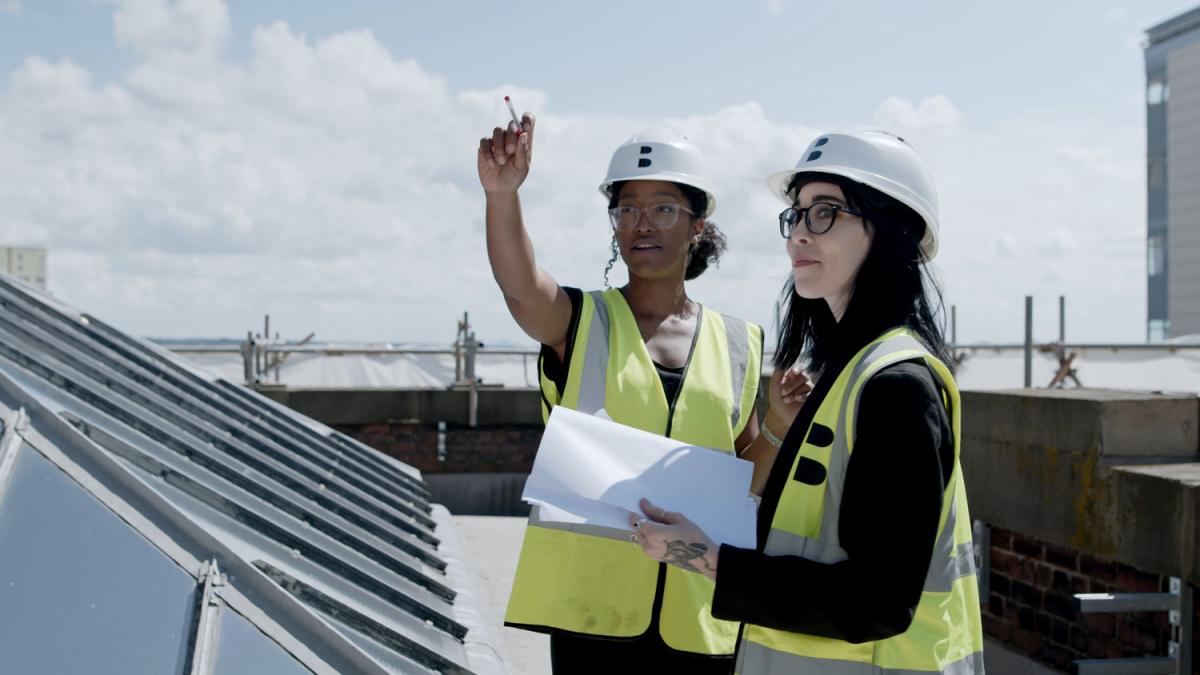
Q: How do you hope the revitalised The Harris Museum will continue to support the local community?
Lauren: There have been a lot of eyes on the project and looking out for when it’s going to be back. It’s been a privilege to contribute to something so significant for Preston and for the city’s cultural needs. The Harris sits at the heart of the community, providing a space for people to engage with art and culture in new ways, while still connecting with its history. It’s a place where the past and the present coexist, and we hope it continues to inspire and bring people together.
Neal Charlton, Buttress director
We put the question towards the director on the project, Neal Charlton: what are you most looking forward to seeing upon opening?
I think, as we look toward the opening of the Harris, the thing I’m most looking forward to architecturally is people seeing the central pendulum. Now repositioned, it aligns with the marble floor and hangs from our new roof lights in the centre of the space.
Personally, I’m looking forward to seeing the amazing painting of Pauline in the yellow dress back in place, as a much-loved Preston painting, being displayed as it should be in the Harris.
What has it been like to work at the Harris?
The first thing to say is our long-standing involvement at the Harris, having previously worked in the Discover Preston Gallery, has given us a really interesting insight into the overall works. We moved from using a single gallery as the test bed to prototype some of our ideas to then developing those throughout the whole building. Our ventilation and heating strategy was tested in the Discover Preston works and having proved it worked effectively in the first place, we installed it throughout the museum.
We always say the Harris has a great set of bones. It’s got a strong architectural presence that’s just a pleasure to work with. And finally, it’s been an absolute pleasure working with RAA as the exhibition designers. They really brought this mix of blended museum, art gallery and library into different spaces but as a real blended mix.
Samantha Knights
Samantha enjoys delivering design solutions for complex projects involving new build and heritage buildings, cultivating a confident and sensitive approach to design.
Lauren Gabbitas
Lauren's experience includes a broad range of new build, conservation and refurbishment projects.
Neal Charlton
Neal leads Buttress' arts and culture team, with a focus on the restoration, care and adaptation of historic and listed buildings.
